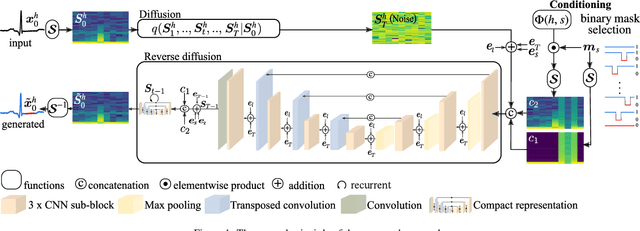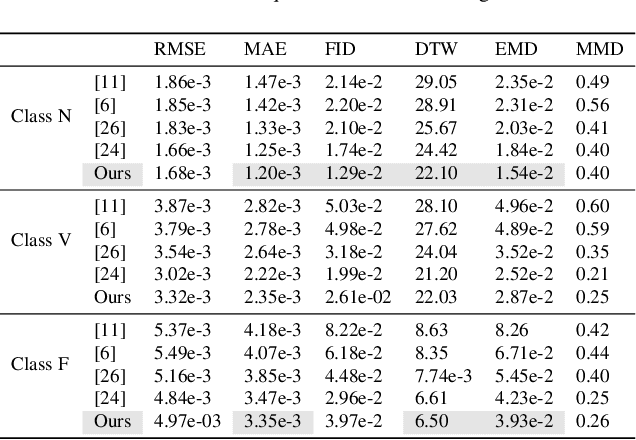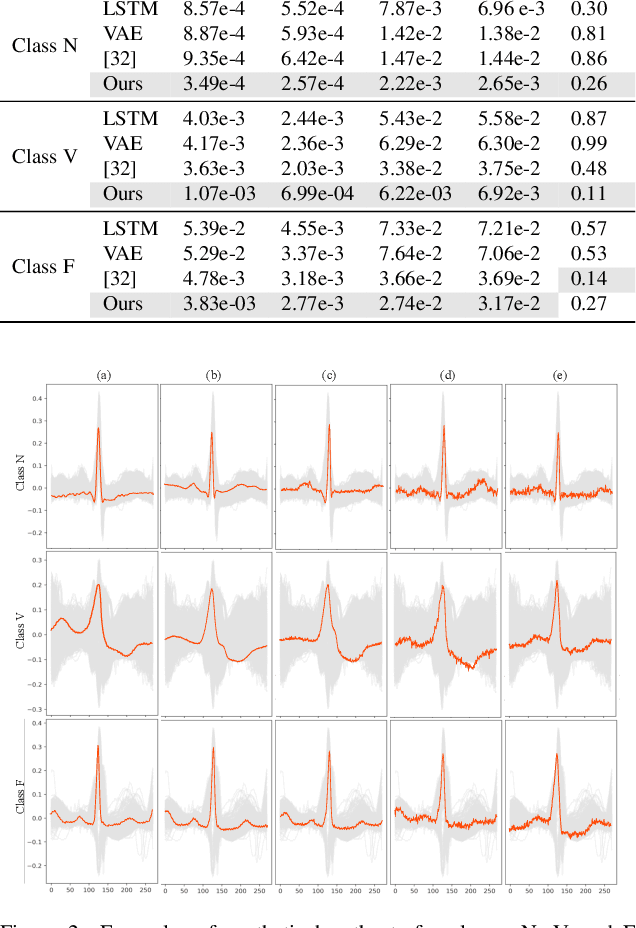Afef Mdhaffar
Deep Generative Models for Physiological Signals: A Systematic Literature Review
Jul 12, 2023Abstract:In this paper, we present a systematic literature review on deep generative models for physiological signals, particularly electrocardiogram, electroencephalogram, photoplethysmogram and electromyogram. Compared to the existing review papers, we present the first review that summarizes the recent state-of-the-art deep generative models. By analysing the state-of-the-art research related to deep generative models along with their main applications and challenges, this review contributes to the overall understanding of these models applied to physiological signals. Additionally, by highlighting the employed evaluation protocol and the most used physiological databases, this review facilitates the assessment and benchmarking of deep generative models.
DiffECG: A Generalized Probabilistic Diffusion Model for ECG Signals Synthesis
Jun 02, 2023



Abstract:In recent years, deep generative models have gained attention as a promising data augmentation solution for heart disease detection using deep learning approaches applied to ECG signals. In this paper, we introduce a novel approach based on denoising diffusion probabilistic models for ECG synthesis that covers three scenarios: heartbeat generation, partial signal completion, and full heartbeat forecasting. Our approach represents the first generalized conditional approach for ECG synthesis, and our experimental results demonstrate its effectiveness for various ECG-related tasks. Moreover, we show that our approach outperforms other state-of-the-art ECG generative models and can enhance the performance of state-of-the-art classifiers.
Leveraging Statistical Shape Priors in GAN-based ECG Synthesis
Oct 22, 2022Abstract:Due to the difficulty of collecting electrocardiogram (ECG) data during emergency situations, ECG data generation is an efficient solution for dealing with highly imbalanced ECG training datasets. However, due to the complex dynamics of ECG signals, the synthesis of such signals is a challenging task. In this paper, we present a novel approach for ECG signal generation based on Generative Adversarial Networks (GANs). Our approach combines GANs with statistical ECG data modeling to leverage prior knowledge about ECG dynamics in the generation process. To validate the proposed approach, we present experiments using ECG signals from the MIT-BIH arrhythmia database. The obtained results show the benefits of modeling temporal and amplitude variations of ECG signals as 2-D shapes in generating realistic signals and also improving the performance of state-of-the-art arrhythmia classification baselines.
 Add to Chrome
Add to Chrome Add to Firefox
Add to Firefox Add to Edge
Add to Edge